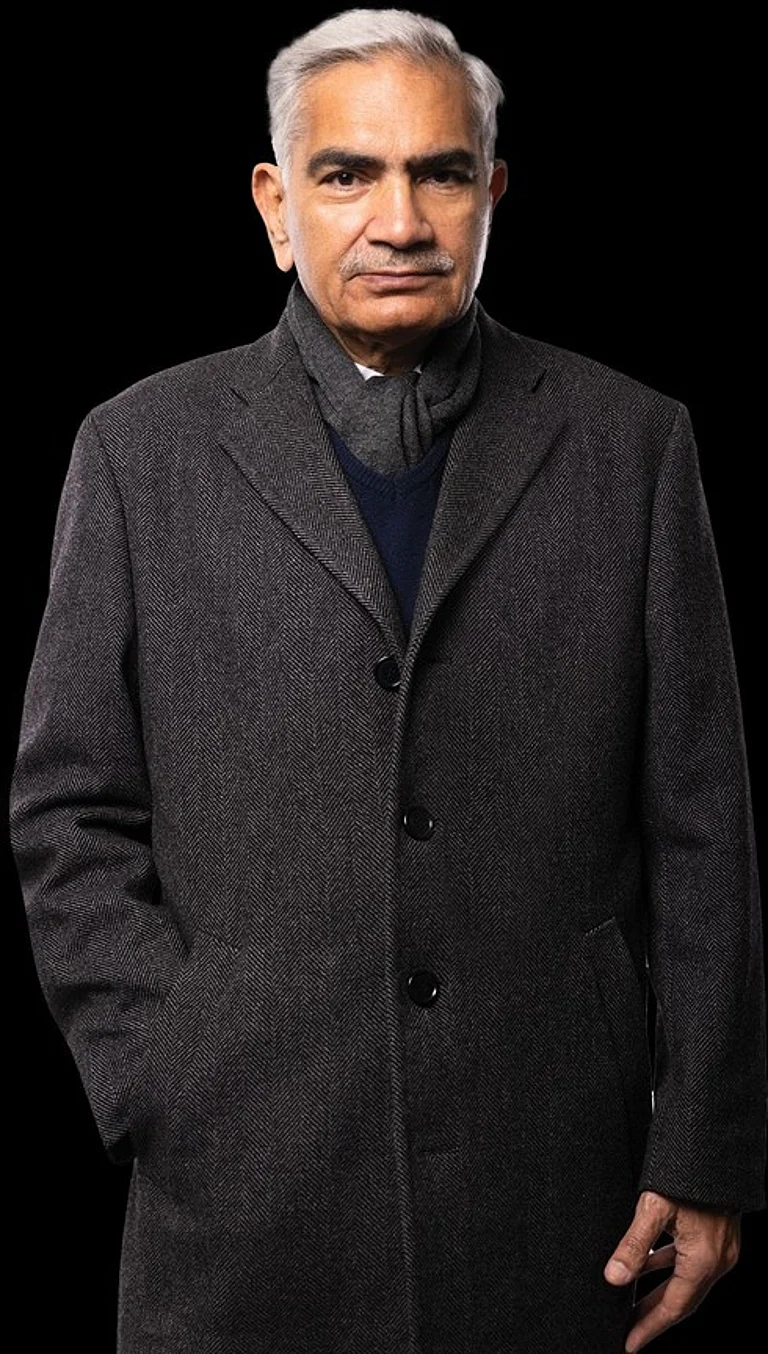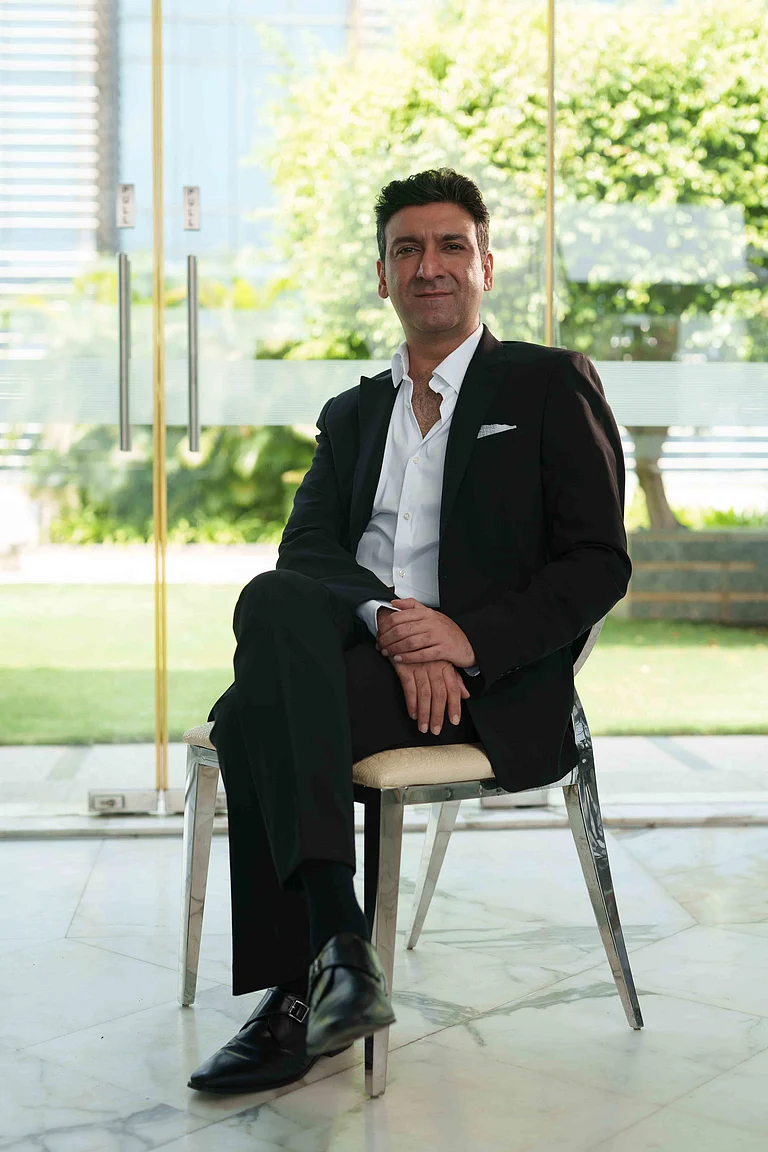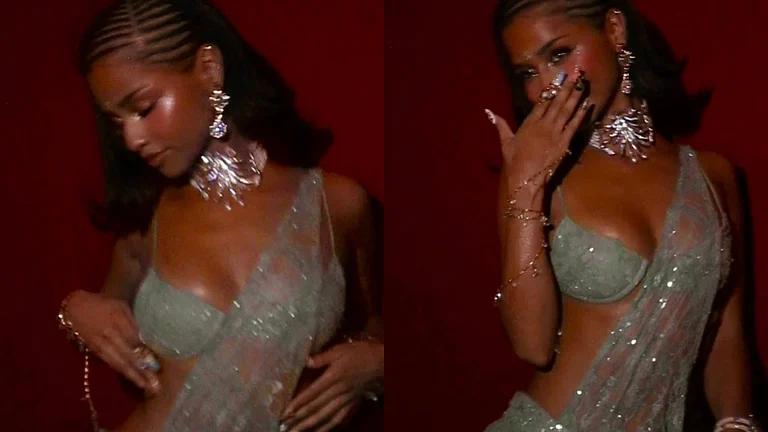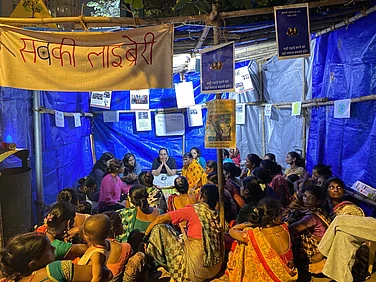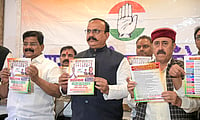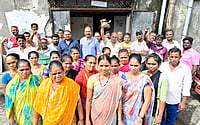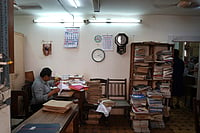The petals of 'Lakme Fashion Week 2025 summer collection' unfurled on March 26, 2025 at Mumbai. On the opening day, the scorching heat scarred some of the models' feet as they rushed toward their respective venues. One of them was late. She was at the venue, yet her blood sugar level had dropped. So stressed that her friend had bagged a spot to walk for Tarun Tahiliani. "It is okay, I will get a spot," she muttered. The stress was carried over quickly to the lady standing next to her, the lines on her forehead as deepened as those of the models. She had heard her name twice now, ‘Noor Enayat, where is she?’ (Consultant, PR and Communications with Fetch Consulting for Lakme Fashion Week). She gulped as the show was about to start.
Enayat exhaled but there were a few breaths which had to exhale even more deeply: the artisans. At least there were eyes to see their whispers here. How does it feel when a whisper, woven in silence, curls like an autumn leaf—devoid of societal chaos—falls softly onto the ramp? And with it, thousands follow. Now, picture them as women in their forties, seated in a small, cubical room, enclosed not just by walls but by a world that has never welcomed them. They wonder—what do these women do? But without any means of communication, their questions remain unheard. These women have never left their village, more precisely, they have never stepped beyond their own homes, nestled in Mount Lebanon. While they mumble among themselves, their hands remain busy—crocheting, weaving—for fashion brand Salim Azzam, questioning their inheritance as Druze. With no idea of the reception their craft is getting approximately 5000 kilometres away in India.

“It is an answer. The collection this time is for all the women I know from back home: my mother, sister and all the Druze women who made it happen,” Salim said, standing alongside Kazna Asker and Yousef Akbar. The ramp trembled slightly as the collection, crafted by the hands of women from his community, wowed the crowd at the Lakmé Fashion Week 2025 in Mumbai.
Heels clicked, carrying the weight of a silhouette, until a wisp of thread sewed itself into a butterfly. Every bit of fabric swayed until one of them stepped forward with a butterfly resting on her lips. “Silenced by beauty,” a fashion enthusiast whispered, while Salim described it as metamorphosis. Who would have thought that a heritage once confined within four walls would now travel across the world?

But metamorphosis comes in many forms. To Kazna Asker, it was the space between Yemen and the United Kingdom—a migrating heritage. “My father came to Sheffield when he was twenty-one. He knows drapes long enough to cover you, but I have seen the next generation wearing sneakers and shorts with headgear. What would you call heritage then?” she mused. Her collection embraced this evolution, seamlessly blending trousers with MENA (Middle Eastern and North African) attire.
“I am super proud of our culture and of creating clothes for our community so they can represent themselves, but there has been a major shift, and we must respect that as well. You can see an older auntie in an abaya and headscarf, and next to her, her son in a puffer jacket and tracksuit. That is heritage—it is intergenerational, ever-changing,” she explained.
As Lakmé Fashion Week stepped into its 25th year, it felt less like a grand spectacle and more like a quiet conversation—one between fabric and feeling, between tradition and transformation. In partnership with the FDCI, the runway was not just a place for dazzling theatrics; it became a space for reflection.

Designers didn’t chase trends or loud statements. Instead, they paused, rethought, and reimagined—what does fashion mean in a world shifting beneath our feet? With the earth warming, cultures evolving, and consumers seeking meaning beyond labels, the five-day showcase wasn’t about one defining look. It was about a gentle reset—of silhouettes, craftsmanship, and purpose. A whisper of change, woven into every thread.
AK-OK's Silver Collar collection, which opened Fashion Week on March 26, transformed the pallu of a sari into a top. Actor Ananya Panday paired it with bright blue wide-legged pants adorned with heavy silver embroidery. Rahul Mishra’s 'Afew' combined the designer’s Paris runway expertise with bandhini and shibori in The Silk Route collection, featuring body-hugging dresses, shirt dresses with angel-feather sleeves, and plaid-patterned jumpsuits with sculpted bows. Tarun Tahiliani masterfully reinterpreted hand-embroidered chikankari and Rabari craft in his ready-to-wear label 'OTT', showcasing trench coats, bomber jackets, and intricately crafted blouses while for Rahul Mishra’s AFEW collection, Jahnvi Kapoor wore a bodycon crafted from bandhini fabric.
Yet, the question remained: What exactly is fashion?
“Something new, sprinkled with who you are but you have to be a devil in detailing,” London-based fashion consultant Nikhil Mansata reflected, referencing Anamika Khanna’s opening show.

Shakil Ahmed simply smiled, his eyes gleaming as he was escorted backstage. A rhythmic thump of the dholak echoed through the air, folk singers led the conversation ahead. Chairs were arranged in a circle, their curved backs forming an unbroken ring a theater-in-the-round setting. Dim lights bathed the stage, where poet Priya Malik walked down, reciting verses before models entered, draped in traditional batik prints.
“Fashion should reflect your lineage,” Ahmed said, carrying forward a legacy six generations in the making. His ancestors once crafted these fabrics for the local farming communities, weaving black and red hues into patterns that were not sold for money but bartered for grains.

The process of creating batik prints begins with paraffin wax. Once applied, the fabric is dyed. “You then boil the cloth, which removes the wax and allows the print to set,” Ahmed explained. But for him, batik wasn’t just a craft; it was heritage. He incorporated motifs over 150 years old, each stitch a silent testament to his lineage.
“Sometimes, fashion is simply the dress your grandmother gifted you,” said Muskan Khatri, who presented a vibrant bandhani collection. The same held true for Zaid Khatri, 21, who carried forward the legacy of the Ajrakh Gharana. “Yeh mujhe virasat mein mila hai,” he said with quiet pride as his collection concluded the fashion week. The five artisans who presented their fabric were selected by Somaiya Kala Vidya, which offers both design and business education to traditional working artisans of Kutch.
The journey of Ajrakh begins with raw fabric, stretched and pulled through the river’s embrace, again and again, until it softens to the rhythm of flowing water. It is scoured, beaten, steamed, and patiently prepared. Hands print ancient patterns using resist mud pastes gathered from the riverbanks, sealing stories into the cloth. A dusting of powdered camel dung and ground rice husks follows, setting the stage for colour to seep in. Then comes the soul of Ajrakh—deep reds, the endless blues of indigo. Unlike other forms of printing, where colour is brushed onto fabric, here, the cloth first resists, then surrenders. And in that surrender, it becomes something timeless.
Timelessness was at the heart of Lakmé Fashion Week this year. Renowned designers like Shantanu Nikhil, Rahul Mishra, and Manish Malhotra graced the red carpet, presenting their archives and showcasing journeys that extended far beyond a single showstopper moment.

Apart from an array of debutant designers, there was also Max, a leader in India's fashion retail space, marking its presence. The Max event signalled a strategic expansion of Max Fashion's brand identity--from a dominant retailer to an influential tastemaker with the unveiling of its Sicilian Summer and Amalfi Escape collections.
Carving out distinct journeys has been the foremost element of fashion shows. With a few hiccups along the way, Shivan & Narresh, who began their fashion journey fifteen years ago, finally had their moment of celebration. This came after the controversy surrounding the Gulmarg Fashion Show. What had begun as an ode to creativity quickly turned into a storm of backlash in Muslim-majority Kashmir. Outrage erupted when Elle India shared a video featuring models in underwear and bikinis. The controversy deepened when Lifestyle Asia posted footage of an after-party where guests were seen drinking outdoors. What was meant to be a form of artistic expression had instead sparked heated debates over cultural sensitivity.
The summer collection must offer more than just seasonal appeal; it should transcend the runway and find a place in everyday wardrobes. The true success of a collection lies not just in its artistic expression but in its wearability. After all, at the end of the day, what matters is how much of it actually gets sold.

Somya Goyal, the highlight of the Nexa showcase, embraced this philosophy by crafting trans-seasonal garments using recycled materials. Yet, in such innovations, durability often walks a fine line. “I believe in the butterfly effect,” she said. “It is slow, but the change is definite.”
“That’s the beautiful part of fashion,” Enayat remarked. “Here or anywhere, you will always find ways to express and today, who doesn’t face backlash?”
But the question still lingers: ‘What is fashion?’
For Aida, who works for Salim Azzam, fashion was not just an external statement but an intimate language. One spoken through the hum of her sewing machine. At 20, she took a sewing course in her village, where she learned to crochet and sew, picking up the art of knitting from her mother and grandmother. As the years passed, the machine became more than a tool; it became a confidant, a friend that stitched her unspoken thoughts into fabric. Each thread she wove carried echoes of who she was, yet it also whispered of a future where tradition and individuality could coexist.
Much like fashion itself, Aida’s journey wasn’t about one defining moment but a gradual evolution. Every stitch, every design she created, was a quiet rebellion against the idea that fashion must always be loud. It was a reminder that style isn’t just about what you wear, it’s about what you carry forward.
So, it is not merely about fabric and trends, fashion can be felt like an emotion. But should a fabric be confined, controlled, or allowed to evolve freely? In society, is clothing meant to be worn, judged, or criticised? Fashion, at its core, is what it is—a force that stirs conversation, even within you.
'‘If you see someone wearing something, you will understand their geography, history, and politics. It is all there. It is all there the fable of fabric will narrate it to you," Asker said.








